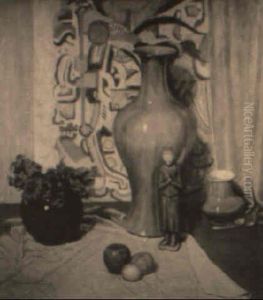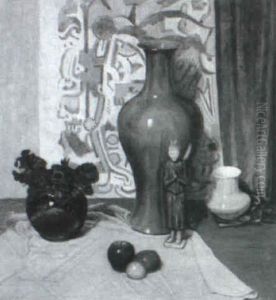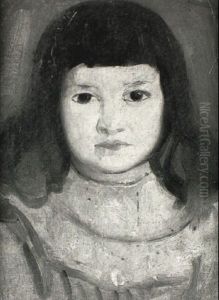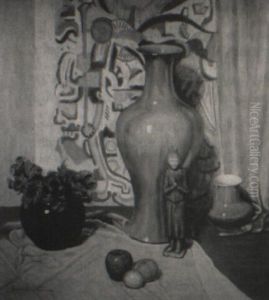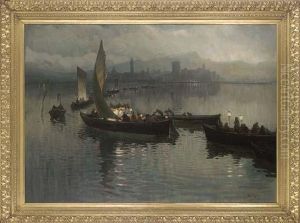Alexander Wallace Rimington Paintings
Alexander Wallace Rimington was an English artist, musician, and writer, known for his contributions to the late 19th and early 20th-century art world, particularly in the realm of color organ performances. He was born in 1854 in the United Kingdom and demonstrated an affinity for the arts from an early age. His diverse interests led him to explore various mediums, but he is perhaps best remembered for his work with 'colour music' and his invention of the Colour Organ, a device that aimed to represent musical tones and harmonies with corresponding visual colors.
Rimington's Colour Organ created a unique spectacle that combined both auditory and visual experiences, a concept that was quite revolutionary at the time. His public performances attracted considerable attention, with audiences experiencing what some described as a form of synesthesia—seeing sounds as colors. This work placed him within the broader cultural movements that sought to break down barriers between the senses and the arts, including symbolism and synesthetic art.
In addition to his performances, Rimington was also an accomplished painter, often incorporating his theories about color and its emotional impact into his artworks. His paintings were exhibited at various galleries, and he was associated with several art societies of his time. Rimington's interest in color theory also led him to publish writings on the subject. His most notable book, 'Colour-Music: The Art of Mobile Colour,' delved into his philosophy and technique, and it became a seminal text for those interested in the intersection of music and visual art.
Despite his innovations and the interest they generated among artistic circles, Rimington's work was met with both fascination and skepticism. While some saw his performances as mesmerizing and groundbreaking, others viewed them as mere novelties. Nevertheless, his contributions to the concept of color music have had a lasting impact, influencing later generations of artists and musicians interested in the synesthetic relationships between sound and color.
Alexander Wallace Rimington passed away in 1918, but his legacy lives on in the field of visual music and the continuing interest in multisensory artistic expressions. His work predates and arguably anticipates some of the 20th-century explorations of similar themes, making him a pioneer in a realm that continues to evolve today.
